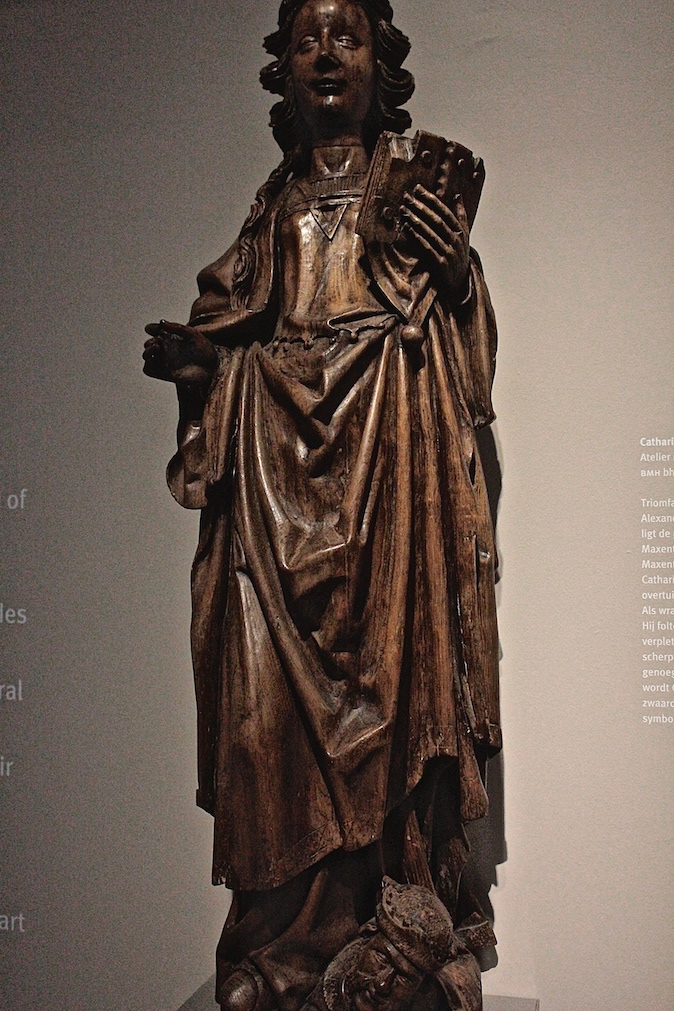

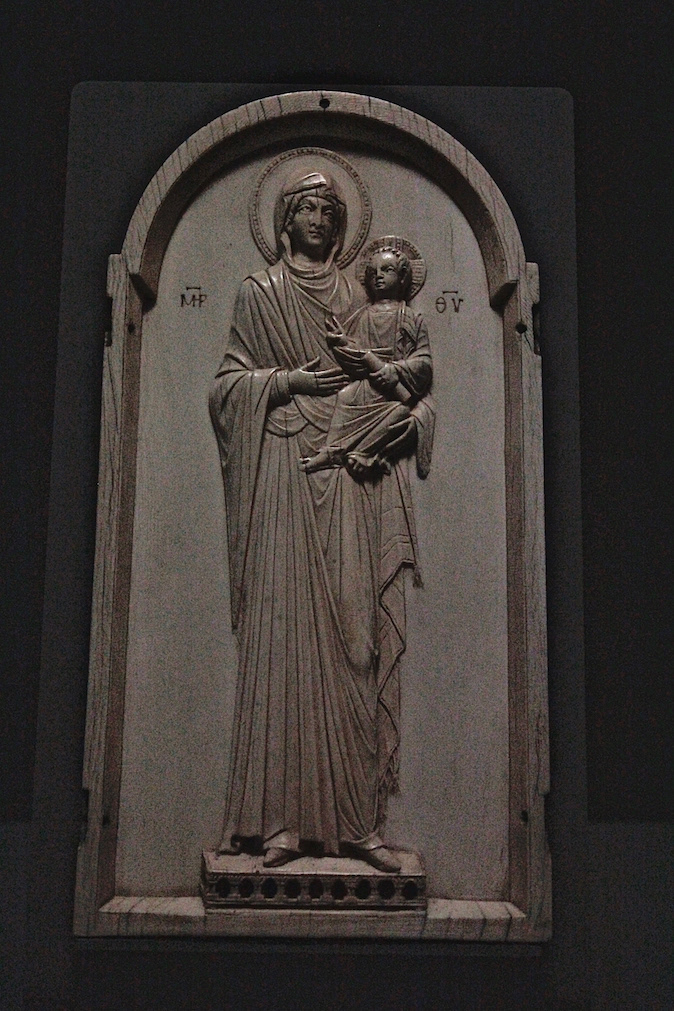
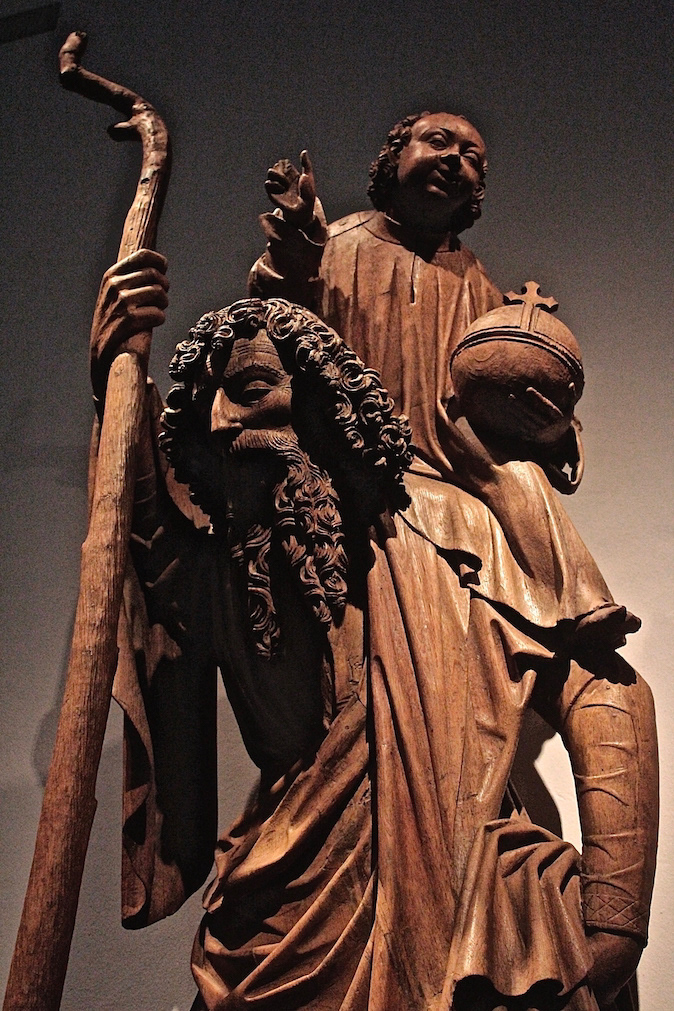
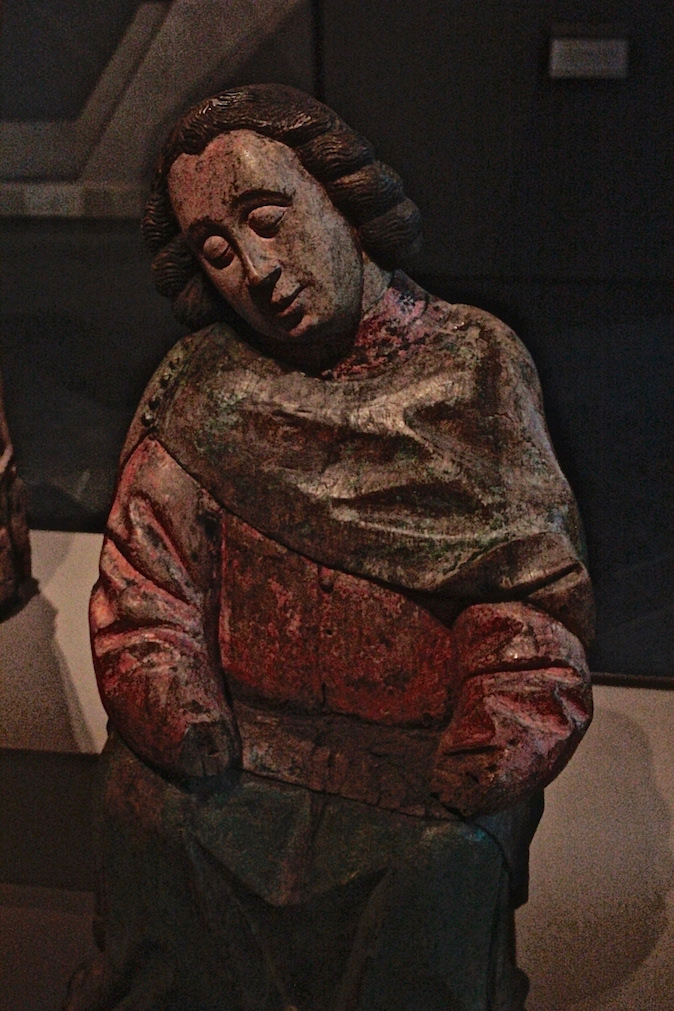
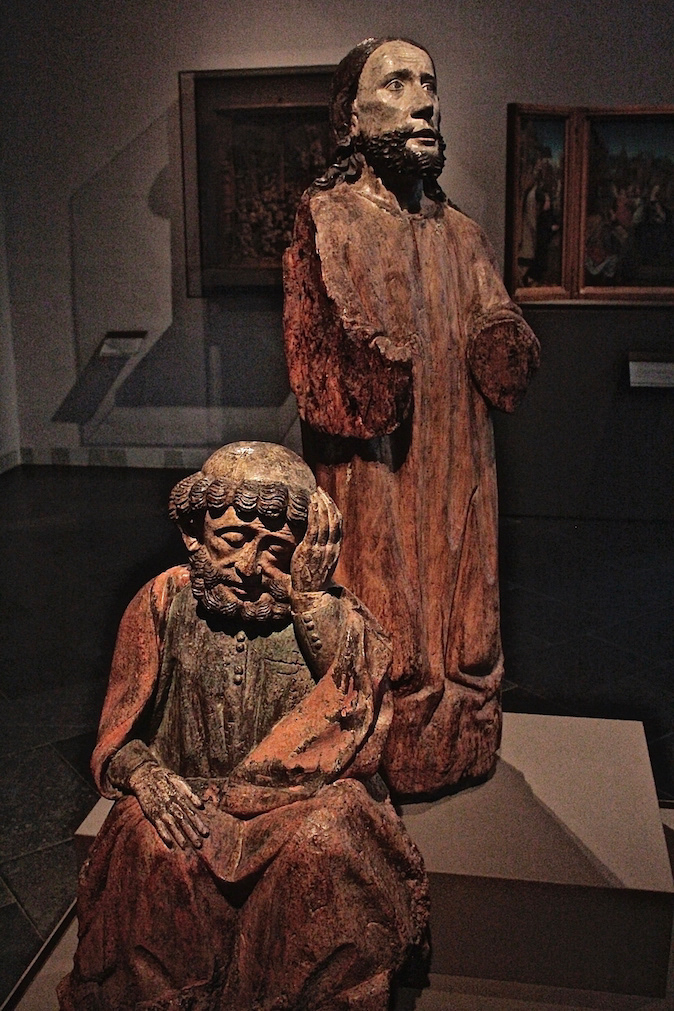



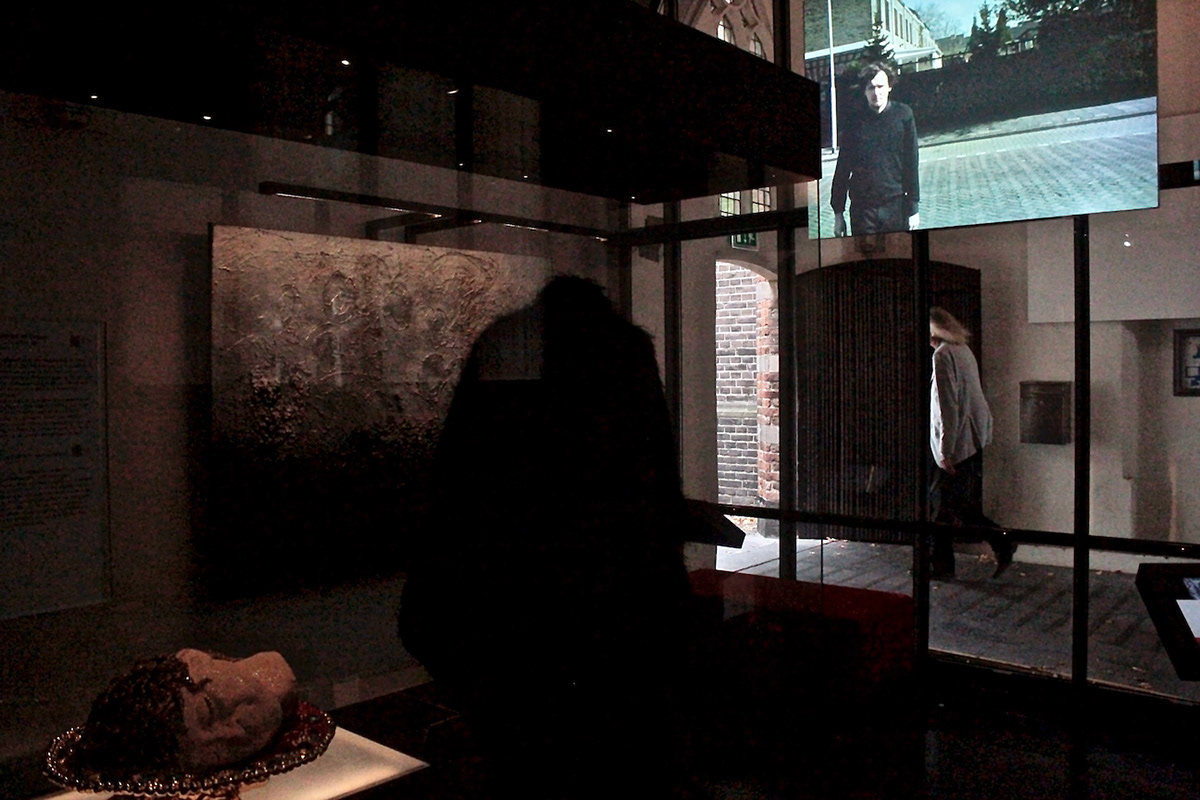
Images produced without manipulation (DSLR Camera, Canon). These are some of the pictures I took at the Catharijneconvent Museum in 2014. Walking in spaces like this is for me a kind of pilgrimage (in the sense explained by Proust/Ruskin). But I didn't have a script. I photographed only what truly affected my senses, without looking for titles and authors. Relief and texture are important (I want an effect which reveals the forces behind/throughout the image). Also framing (as a parergon, in Derridean sense). They help me to induce some claustrophobia. Vision has to do with many things besides visual perception, such as "the memory of touch and movement" (Gombrich), but also smell and the sense of disintegration.
This isn't any academic, instructive exercise, quite on the contrary. The images should "speak" by themselves. The truth is in their auras, even if the aura is lost, when it is lost—don't you have an answering service? This is also an attempt to release the images from all the discursive networks that supposedly support them as officially sanctioned cultural artefacts (and if these networks were not official, my intention would be the same). The images should haunt us to the extent that we fail to name them, as dream impressions or memory failures.
The works photographed here include:
***Christ on the cold stone (East Holland/1500-1520, limestone, rests of polycromy/98x49x48cm);
***Christoffel (Henrick Douwerman/1521-1530, oak, rests of polycromy/277x110x66cm);
***Gethsemane group (Middle Rhine/ca. 1440);
***Ursula and travelling companions (Meester van Utrecht/ca. 1530, polychromed oak/ 120x45x25cm);
***Christ on the cross (Atelier Meester van Elsloo/ca. 1520-1530, oak with traces of polychromy/224x176x24);
